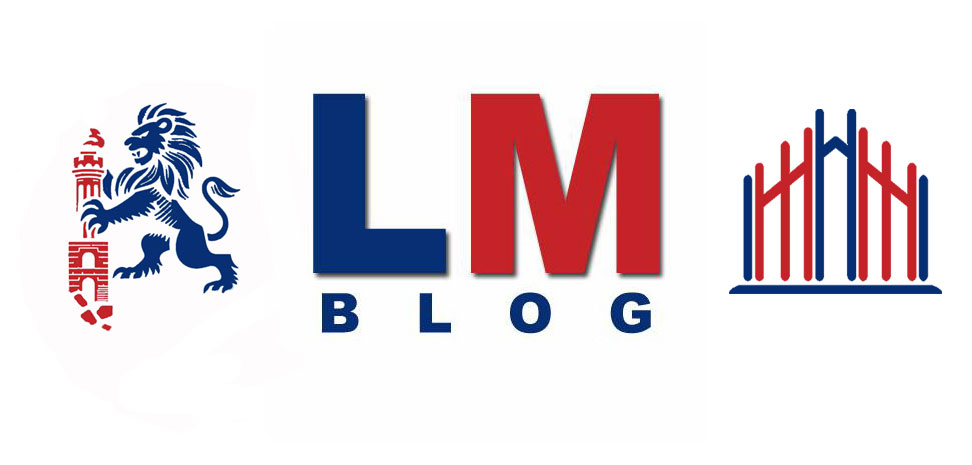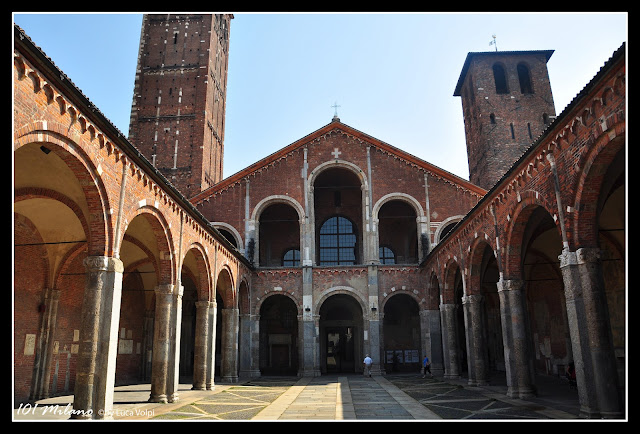37. Restare perplessi di fronte ai misteri di Sant’Ambrogio
|
Italiano
La Basilica di San’Ambrogio, voluta e fondata nel 379 dal santo patrono di Milano si trova in Piazza Sant’Ambrogio. E’ raggiungibile con la metropolitana MM2 fermata Sant’Ambrogio o con la MM1 fermata Cadorna..Per organizzare la visita verificate gli orari di visita sul sito http://www.basilicasantambrogio.it . La basilica è antichissima ma nuova allo stesso tempo, è stata infatti completamente ristrutturata in seguito ai bombardamenti subiti durante la seconda guerra mondiale. |
English
The Basilica of Sant’Ambrogio wanted and founded in 379 by the patron saint of Milan is located in Piazza Sant’Ambrogio. It is reachable by subway line MM2 Sant’Ambrogio or by line MM1 Cadorna . Before arrange a visit check the schedule on the site http://www.basilicasantambrogio.it. The new church is ancient, but at the same time new, it was completely restored following the bombing of the Second World War. |
|
Superato l’ingresso vi troverete nel quadriportico, un cortile porticato, inizialmente riservato ai catecumeni, ovvero coloro che si stavano preparando al battesimo e non erano ancora ammessi ai riti, o ai penitenti. La facciata è maestosa, ma fatta con i materiali tipici dei casali di campagna della zona. Presenta due logge sovrapposte: quella inferiore a tre arcate uguali che si ricongiunge con il quadriportico, e quella superiore a cinque arcate.
Ai lati della facciata ci sono i due campanili: a destra quello dei Monaci (VIII sec.) e a sinistra quello dei Canonici (XII sec.). Perché questa distinzione? Sembrerebbe che, in seguito al fatto che nel medioevo era frequente trovare più di un gruppo religioso nello stesso edificio, nacque una certa rivalità e ciascuno dei due gruppi volle costruire il proprio campanile. |
After the entrance there is the quadrangle, a courtyard, initially reserved to the catechumens, those who were preparing for baptism and were not yet admitted to the rites, or to the penitents. The facade is impressive, but made with typical materials of the farmhouses of the area. It has two loggias: the lower with three equal arches connected with the portico, and the top one with five arches. On each side of the facade there is a tower: the right ones built by the Monks (VIII sec.) and the left ones built by the Canons (XII sec.). Why this distinction? In medieval times it was common to have more than one religious group in the same building, and probably a certain rivalry was born and each group wanted to build his tower.
|
| L’interno della basilica è una mescolanza tra sacro e profano. Sfarzosissimi altare e ciborio. |
The interior of the basilica is a mix of sacred and profane. The altar and ciborium are magnificent. |
|
Particolare il fatto che la basilica possa essere considerata come una grande tomba di famiglia, visto che Ambrogio, il fratello Satiro e la sorella Marcellina sono tutti sepolti qui. Ambrogio è sepolto nella cripta sotto l’altare in un sarcofago insieme ad altri due martiri: Gervaso e Protaso. |
Particular is the fact that the church can be considered as a large family tomb, Ambrogio, his brother Satiro and his sister Marcellina are all buried here. Ambrogio is buried in the crypt under the altar in a sarcophagus together with two other martyrs: Gervaso and Protaso. |
|
Il fascino di Sant’Ambrogio risiede anche nei misteri religiosi e pagani che contiene. Una volta entrati in chiesa, dopo pochi metri sulla sinistra, vi troverete di fronte una colonna con sopra un serpente di bronzo. Secondo la tradizione si tratta di una statua bizantina riportata da Ambrogio da uno dei suoi viaggi in oriente. Di fronte fu posta una colonna identica con in cima una croce. Secondo la leggenda, il giorno del giudizio il serpente prenderà vita e striscerà fino ad avvolgersi intorno alla croce. |
The Sant’Abrogio charm lies also in its religious and pagan mysteries. Once inside the church, after a few meters on the left, you will be in front of a column with a bronze serpent on it. According to tradition it is a Byzantine statue that Ambrogio reported by one of his trips in the East. The Milanese in front of it placed an identical column with a cross on top. According to legend, the Day of Judgment the serpent will come to life and will crawl to wrap around the cross. |

|
Prendetevi poi il tempo di visitare il resto della basilica, visto che contiene tesori di incomparabile valore artistico. Con 2 EUR potrete visitare anche il Tesoro di San’Ambrigio e soprattutto visitare il Sacello di San Vittore in ciel d’oro. |
Then take the time to visit the rest of the basilica, as it contains treasures of incomparable artistic value. With 2 EUR you can also visit the San’Ambrigio’s Treasury and especially the “Sacello di San Vittore in ciel d’oro. “ (Shrine of San Vittore with golden vault). |
| Un’ultima cosa, quando uscite, vedrete una colonna all’angolo della strada, con due fori sul lato. E’ detta “Colonna del Diavolo”. I due fori sarebbero stati causati da Belzebù in seguito alla frustrazione per non essere riuscito ad indurre in tentazione il santo vescovo. |
One last thing, when you leave, outside the church on the street corner there is a column with two holes on the side. It is called “Devil’s Column”. The two holes were caused by Beelzebub as consequence of the frustration for not being able to tempt the holy bishop. |
Immagini © 2012 Rimoldi Marco and by Luca Volpi. Alcune parti del testo derivano da una riproduzione o una modifica del testo delle rispettive voci di Wikipedia, pertanto l’intero testo è disponibile secondo la Licenza Creative Commons. Alcune parti del testo derivano da una riproduzione o una modifica del testo delle rispettive voci di Wikipedia, pertanto l’intero testo è disponibile secondo la Licenza Creative Commons. |
Pictures © 2012 Rimoldi Marco and by Luca Volpi. Some parts of the text are a reproduction or a text editing from the respective Wikipedia article, so the entire text is available under the Creative Commons License. Some parts of the text are a reproduction or a text editing from the respective Wikipedia article, so the entire text is available under the Creative Commons License. |









